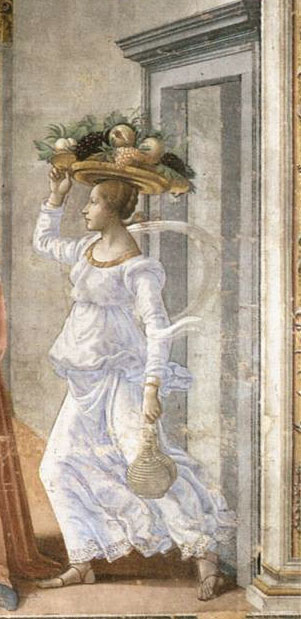Elective at semester(s) 7, 9, ECTS: 3
Generic Competences: Ability to search for, process and analyse information from a variety of sources using the necessary technologies, Ability to make reasoned decisions, Ability to work autonomously, Ability to interact constructively with others regardless of background and culture and respecting diversity, Ability to be critical and self-critical , Ability to promote free, creative and inductive thinking.

Knowledge, Comprehension, Analysis
Obtaining of a more thorough understanding of this era through its main architectural works. The development of a critical viewpoint of this era and the evolution of Architecture as art and practice combined, both significant for the future development of the architectural profession.
The second ,but equally important objective of the course, is to introduce the student to the ethos of research, by teaching him/her how to approach the historical sources, how to search for literature (primary and secondary) and how to develop a historical-theoretical question.
The foundation of a new era for the Western World on an old and forgotten for over a millennium model, i.e., the Classical world (Rome, Greece).
The lesson discusses and analyzes the phenomenon of this return in two distinct periods of modern history, the Renaissance and Enlightenment, and the importance of the intermediate era: Baroque. How are these three cultural periods set in sequence and what are the new avenues they open for Architecture? Which old conceptual tools revive and rationalize space by producing new structures (city, building)? How does art assist in the representation, understanding, and production of new architecture? Which aspects of the theocratic past does this age let fall in oblivion? How does the human being, as body and spirit combined, appear anew and become the basis for reflection of design? These questions constitute some of the coordinated on which the course will proceed in terms of content.
The course covers the following subjects (or periods):
• The transition from the Italian Middle Ages to the Renaissance
• The Age of the Renaissance in Italy (Early, High, Late/Mannerism)
• The expansion of the Renaissance in France
• The Age of the Baroque in Italy
• Baroque in France & England
• The Age of the Enlightenment in France and England (Neo-Palladianism, Archaeological Neoclassicism, Structural & Revolutionary Neoclassicism, Gothic Revival & the idea of the Picturesque)
MEETINGS WITH THE INSTRUCTOR
On Tuesdays 11:00 am-2:00 pm (or at other times, if so needed)
Contact tel. no.: 210-6547659 / 6972011756 / e-mail: idfatsea@uth.gr
COURSE PROCEDURES AND EXAMINATION / EVALUATION
The course is based on the close collaboration of the instructor with the students. It is structured on the basis of thematic weekly lectures / presentations, which is undertaken either by the instructor in full or it is shared with the students, based on their research project.
The student's obligations/responsibilities for the course include:
1) The development of a written paper of the student's personal choice (research-based), the subject of which is formed in cooperation with the instructor, who offers the general directions (70% of the total grade)
2) The participation in a short written examination of critical questions that are addressed with direct reference to scholarly sources (open books) (30% of total grade)
REQUIREMENTS
1) Attendance the weekly lessons and obtaining sufficient notes on which the study for the final examination will be based. Especially is encouraged the active participation in class with comments, questions, suggestions,
2) The elaboration of a modest in size research exercise, with the following particulars:
(a) Progress meetings with the instructor during the semester, at least two, the first of which concerns the selection and launching of the specific subject (within the first 4 weeks of the semester) and one more (at least) during the process. In case of team work, all members of the group are required to be present during the progress meetings.
(b) A final presentation of the project is planned for one of the final few weeks of the semester.
(c) Final submission in the form of a research paper (A4 page size) of 2,500-3,000 words (i.e., 8-10 page long) and adequate margin (5 cm at least on all four sides). The work should follow the specifications of a standard scientific paper, i.e., use of scholarly and widely recognized sources (not random / anonymous pages from the Internet). The paper should be also properly footnoted, as well as clearly formatted in paragraphs, distinct parts and small chapters (at least Introduction - Main Part - Epilogue / Conclusions), with the necessary number of images, drawings or diagrams, of sufficient size, accompanied by a caption), numbering, and – if possible – image source.
3) Participation in the final examination and obtaining a passing grade (5.0) toward the successful completion of the course.
Gardner’s Art through the Ages, 11th edition, Harcourt Brace Jovanovich, Publ., San Diego, etc., 2000.
Trachtenberg, M. & Hyman, I., Architecture from Pre-History to Postmodernism, Harry N. Abrams, Inc., New York, 1986 (ήμεταγενέστερο)
Watkin, D., A History of Western Architecture, Barrie & Jenkins, London, etc., 2000.
Stokstad, Marilyn, Art History (in 2 volumes), Prentice Hall, Inc., and Harry N. Abrams, Publishers, New York, 1995
Janson, H. W., History of Art, 3rd edition, Harry N. Abrams, Inc., New York, 1986.
Sir Banister Fletcher's A History of Architecture, Dan Cruickshank (ed.), 20th edition, Architectural Press, Oxford, Boston, etc., 1996 (orig. 1896)
Kostof, Spiro, A History of Architecture: Settings and Rituals, Oxford, New York, 1985 (ήμεταγενέστερο).
A. Richard Turner, Renaissance Florence; the invention of a new art, New York : Harry N Abrams ; London : Laurence King, c1997
FURTHER BIBLIOGRAPHY
Harris, Cyril, Illustrated Dictionary of Historic Architecture, Dover Publ., Inc., New York, 1984.
Grove's Dictionary of Art (34 τόμοι), New York, 1996 [πολύ βασικό εγκυκλοπαιδικό και βιβλιογραφικό βοήθημα]
Roth, Leland M., Understanding Architecture: Its Elements, History, and Meaning, Icon Edit., 1993.
Fleming, J., Honour, H., Pevsner, N. The Penguin Dictionary of Architecture (3rd edition), Penguin Books, London, England /New York, N.Y., 1980.
Stevens,Curl James,A Dictionary of Architecture, Oxford University Press, Oxford, England, 1999.
